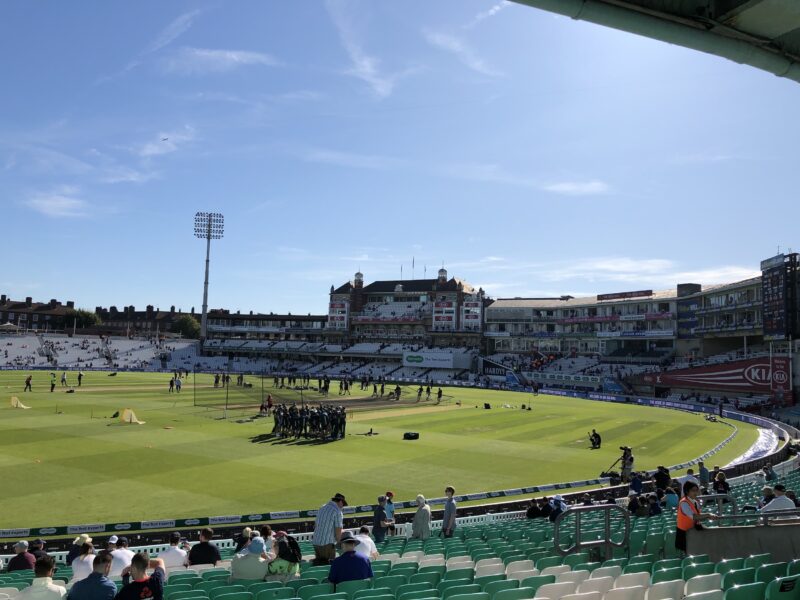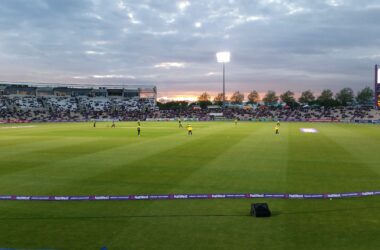Earlier this year, the Marylebone Cricket Club decided to remove the annual varsity fixtures of Eton v Harrow and Oxford v Cambridge from the Lord’s fixture schedule.
While those fixtures form part of the rich history that Lord’s boasts, having been played since the 19th century, MCC chief executive Guy Lavender wrote to members to explain the club wanted to give greater opportunities for cricketers from all backgrounds to play on the hallowed Lord’s turf.
Outlining several principles behind the decision, the former Somerset Chief Executive dismissed claims that the MCC was simply appeasing woke culture and wanted to give greater opportunities to female cricketers, junior cricketers and have a greater diversity of teams playing at Lord’s.
Lavender said: “I have no doubt that members wish to enable young people to play at Lord’s based on their talent and success in reaching the finals of competitions.
“Everyone on the Committee is acutely aware of the part traditions have played in the history of Lord’s and the game’s development more broadly… but we cannot let our history hold us back if we wish to maintain our relevance and purpose in growing cricket for all.”
Embed from Getty ImagesIt is a refreshing move by the MCC and will open the game up to many young people of different backgrounds who may not have otherwise been inspired to play the sport.
But it is also a reminder that there is still a huge problem of diversity within cricket, as many persons from minority ethnicities are not being given the opportunities to get involved in the sport.
Cricket’s diversity crisis
A recent study carried out by Tom Brown of Birmingham City University found that privately educated white British players are 34 times more likely to become professional cricketers than state-educated British South Asians.
Thirty per cent of all recreational cricketers come from a South Asian heritage, but that figure drops to around five per cent for those cricketers playing the sport professionally.
The study was published in November 2021, just after former Yorkshire cricketer Azeem Rafiq made his powerful testimony before a parliamentary select committee, where he highlighted the failings that English cricket had made about racism and bullying he received during his playing career.
Rafiq’s statements told of how he had been exposed to abuse and discrimination that and one overriding theme that came out of those remarks was how he had been treated differently compared to white players in the sport.
In conjunction with those findings, the South Asian Cricket Academy also reports that less than five per cent of professional cricketers come from South Asian descent.
It is no secret that for many years there has been a problem within cricket that has inhibited many young talented players from ethnic minority backgrounds from being given an opportunity to play the sport and progress along pathways to become professional players.
Extending opportunities to those from state school systems
We only have to look at the makeup of England’s recent test squads to see an example of this.
The Full Toss reports that in 2013, 30 per cent of England’s male test squad were state-educated, which has dramatically fallen from the period between 1960 and 1990 when 60 per cent of the players in the England team came from comprehensive schools.
Embed from Getty ImagesIn recent years that trend has continued to see less state-educated players make appearances for the test side, for example, nine of the eleven players who faced Pakistan in a Test match in Southampton in 2020 were from a privately-educated background.
But the statistics get even more alarming as Sky Sports note that over the last 25 years, the number of Black cricketers who have played for England has reduced by 75%. Since 2004, after the retirement of Mark Butcher, just four Black players have featured in the England men’s cricket team.
It must be said that a lot of those who are playing at the elite level haven’t just moved to the top simply because of wealth.
They are professionals because of their cricketing abilities and there is no suggestion that they shouldn’t be playing at the highest level.
As Paul Greetham, elite cricket development manager at Warwickshire CCC, says: “It’s important to note that some pupils gain bursaries or scholarships to attend independent schools.
“But it is likely that young people from lower socio-economic backgrounds may encounter barriers prior to reaching an elite development standard.”
The problem is that many state-run schools cannot afford to offer the same cricketing opportunities to their pupils as public schools can.
Public schools can afford to build training facilities, purchase bowling machines and pay independent staff to coach their teams.
We are excited to announce the appointment of Michael Carberry and Tom Brown to help shape our work with @ECB_cricket exploring inclusion and equity in cricket.
— Kick It Out (@kickitout) April 29, 2022
Their experience and expertise will be invaluable as we look to drive change in the sport:https://t.co/DhiguXWVHK
On releasing his findings, Brown said: “Results indicate that current talent pathways are failing to provide an environment that can maximise the potential of its players from minority backgrounds.
“As most selection decisions in pathway cricket rely on the subjective views of coaches, a lack of understanding of cultural norms leaves the system prone to biases.”
Where to from here?
It is clear there is a disproportionate representation at cricket’s elite level and players from a Black or South Asian heritage are less likely to turn professional despite the sport being hugely popular in these communities.
The good news is that several different schemes are now emerging that aim to help increase diversity in the sport by giving young talented players more opportunities to participate.
The South Asian Cricket Association (SACA) offers bursaries, education opportunities, and coaching to help young people of South Asian heritage pursue a career in the country.
That programme is being headed by former England seamer Kabir Ali, while Moeen Ali, Adil Rashid and Saqib Mahmood are all Ambassadors of the scheme and it aims to increase the number of British Asian professional players from five per cent to 15 per cent by the end of 2027 while also increasing the number of coaches coming from the same community.
Embed from Getty ImagesMeanwhile, former England cricketer Ebony Rainford-Brent recently established her African-Caribean Engagement Programme (ACE), which aims to increase the number of young people of Black heritage playing the sport.
She said to Sky Sports: “When you start to look at the history of who created the game, it became really obvious that the game is structured in our country to support a certain elite.
“Lots of private schools are known for producing great cricketers as that’s where the systems have been designed from the early days.
“I think there is a lot of beauty in that system but it made me realise we need to design new systems from the ground up to support everyone else.
“We marketed it and in three weeks we had 100 kids turn up. Straight away we found a kid that ended up going to play for Surrey.
Embed from Getty Images“It gives me hope to know that not only is there a whole load of talent out there – ridiculous amounts of talent, some that’s ready to go and some that just needs support – and a whole generation of kids that want to be inspired. There is a system to be designed to get them all in.”
In the future, these pathways will be able to bring more diversity to cricket, encouraging inclusivity, sportsmanship and competitiveness while getting more people involved in what is a fantastic sport to play and watch.








